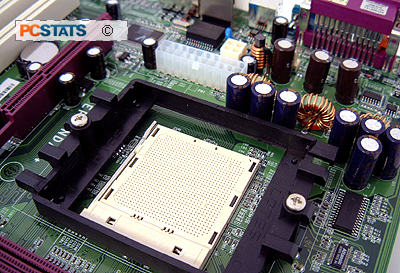 Epox's older socket 754 nForce3-250Gb motherboards were able
to reach 290 MHz FSB, so we had some high hopes for the
9NDA3+ before us.
Epox's older socket 754 nForce3-250Gb motherboards were able
to reach 290 MHz FSB, so we had some high hopes for the
9NDA3+ before us.
The first thing
we did was lower the CPU clock multiplier to 8x so the processor would not
be the limiting factor. Next we began raising the clock speed of the motherboard
slowly. At 213 MHz the motherboard appeared to run into a few memory related issues, but increasing the
memory voltage to 2.8V solved these initial problems.
Continuing, things
went pretty smoothly until 234 MHz. This time we had to increase the NF3 Ultra chipset voltage
to 1.75V, and lower the memory frequency by using the 5:4 divider in order
to stabilize the overclock.
After
that, the Epox 9NDA3+ was easily able to pass 250MHz,
260MHz and 270 MHz. In the end, it
reached a Front
Side Bus overclock of 283 MHz.
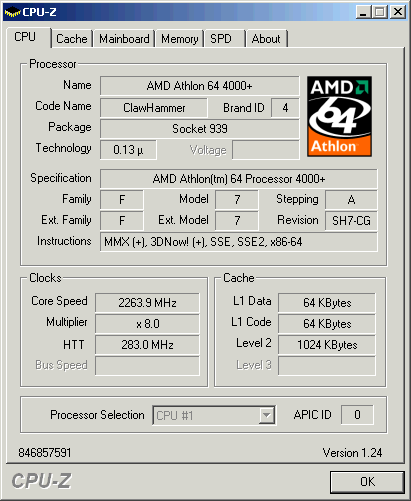
BIOS settings
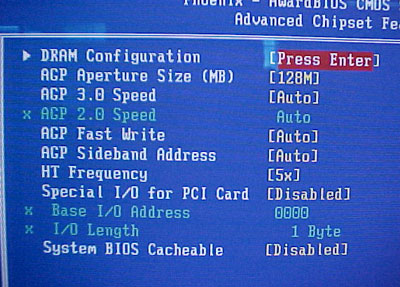
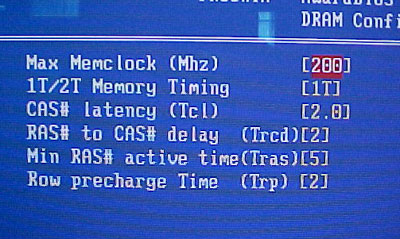
The BIOS has
Traditionally been one of Epox's strongest areas. The 9NDA3+ has quite a few AGP
options in the Advanced Chipset Features section. These include Aperture Size and AGP speed as well as Fast
Write and SBA. In the DRAM Configuration menu we have the usual memory timing
adjustments we've come to expect.
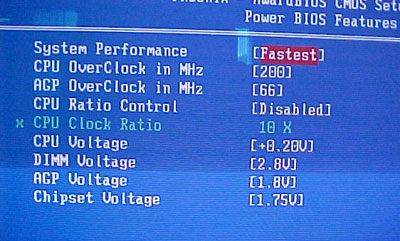
In the Power BIOS section users can adjust the system performance
between 'Normal' and 'Fastest.' The FSB can be tuned from 200-400 MHz in 1 MHz
increments, while the AGP can also be adjusted in 1 MHz increments from 66 MHz to
100 MHz. The clock multiplier ratio can be adjusted but no 0.5 multipliers can
be selected, only whole numbers. Maximum CPU voltage is 0.2V+, DIMM 0.3V+, and
AGP 0.3V+. You can also raise the chipset voltage to 1.75V. Up next, the benchmark
results!
